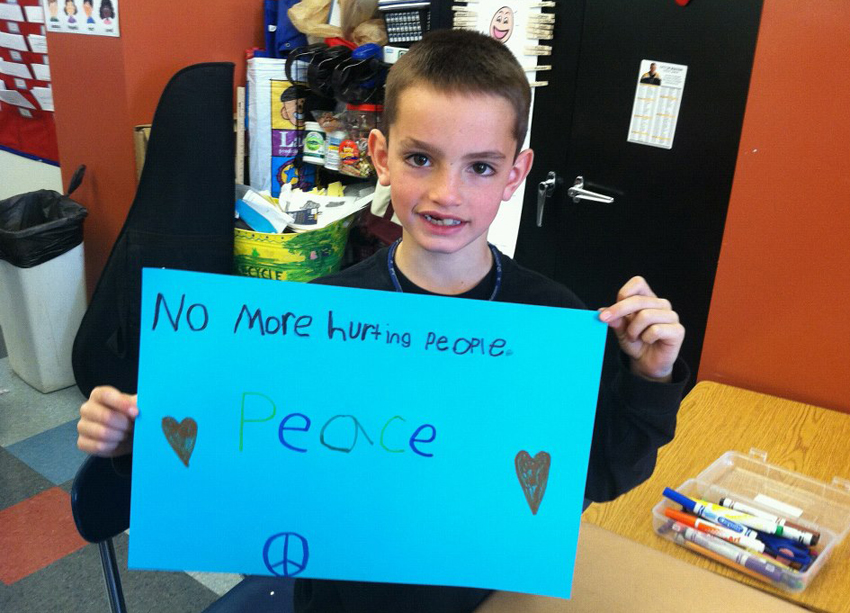Combat Surgeon Describes Martin Richard’s Painful Last Moments at Tsarnaev Trial

Photo via Lucia Brawley/Facebook
In a trial where pain is frequently the topic of testimony, in all its manifestations—amputations, flesh wounds, post-traumatic stress, death—it seemed superfluous to call upon a witness for a textbook definition of pain.
Dr. David King, a trauma and acute care surgeon from Mass General, took the stand to do just Thursday as the prosecution wrapped up its case against convicted Boston Marathon bomber Dzhokhar Tsarnaev in the sentencing phase of his trial. A 14-year combat surgeon in the U.S. Army, King has treated more than 1,000 cases of injuries caused by improvised explosive devices, or IEDs. In the afternoon of the marathon bombing, King treated three.
“I knew without anyone having to tell me exactly what the wounding mechanism was,” King said. “As I looked across the injured patients, in just a few moments, the patterns of injuries was fairly predictable and stereotypical of injuries caused by explosive devices.” These were the sort of injuries King saw in Iraq and Afghanistan, during Operations Iraqi Freedom and Enduring Freedom.
Prior to morning recess, King’s testimony was professorial, describing in intricate detail the two types of pain—somatic and visceral—and the mechanics of blood loss, without referencing any one victim in particular. “For any patient with this characteristic type of injury, the dominant preventable cause of death is exsanguination,” or bleeding out, King said. “Losing all your blood volume and then stopping the blood loss itself is its own set of physiological insult. Your body is not meant to do that.”
However, when court reconvened, the prosecution shifted focus to eight-year-old Martin Richard of Dorchester, one of the three victims killed in the blasts on Boylston Street. Using the information King revealed earlier in his testimony, prosecutors were able to paint Richard’s finish line death not as a swift, instantaneous one, but rather, a slow, excruciating bleed-out.
“…Based on the anatomic injuries, I can say with an extraordinarily high degree of medical certainty, he did not die instantaneously,” King said. “Martin died from blood loss, yes, and rapid blood loss, yes, but that’s not instantaneous.” King noted that twisting, stretching, and distension of the internal organs—not necessarily lacerations—cause visceral pain, precisely the kind Richard experienced.
“The intestines were pulled and twisted and created stretch, and with any degree of certainty, caused visceral-type pain,” King said.
Michelle Gamble, field photographer for the Boston branch of the FBI, was tasked with photographing Boylston Street on the day of the bombing. At the request of prosecutors, Gamble reconstructed the tree grate in front of Forum restaurant upon which Tsarnaev placed his bomb. Using photographs and Photoshop, she produced an exact-scale reproduction of the grate, printed on Tyvek, a heavy-duty synthetic material. Gamble placed the mat in front of the jury and, despite objections from Tsarnaev’s defense team, stood where the bomb was placed, then where Richard stood—just three and a half feet apart.
In order to spot and track Richard in Forum’s security camera footage, his family provided Gamble with several photos, presented to the jury: Richard wearing a party hat, Richard wearing a Red Sox uniform, Richard running with a Boston Athletic Association bib pinned to his chest.
Survivor Steve Woolfenden, a soft-spoken cancer research biologist, was the prosecution’s final witness. He and his son Leo, then three, attended the marathon to cheer on his wife Leo’s mother, Amber. Woolfenden heard the first blast and turned around to flee. But before he could spin around the stroller carrying Leo, the second bomb detonated.
“I just remember the sensation of intense heat, pressure. It felt like every single part of my body was punched as hard as humanly possible,” Woolfenden said. He looked down and saw his tibia protruding from his boot, and something else, about 10 centimeters long, that looked like Scotch tape covered in blood. It was Woolfenden’s Achilles tendon.
On the ground outside Forum, Woolfenden said he felt a presence on his arm. It was Richard, held by his mother, Denise.
“I saw Martin’s face, and I could see a boy that looked like he was fatally injured. I saw his hair had been singed. I saw that his eyes were rolled back into his head and that his mouth was agape,” Woolfenden said. “I could see the top part of his torso. I saw an immense amount of blood. I was really, really terrified.”
He placed his hand on Denise’s back to comfort her as she knelt over her son’s body. She asked if he was all right, and he said he was fine. Of course, he wasn’t—Woolfenden’s leg was later amputated, and he suffered burns across his body, including his neck and scrotum. Denise returned her attention to Martin.
“Martin, please,” Denise pleaded, over and over. Forum’s video showed Martin’s arms raise up and flop back down. Woolfenden didn’t hear a response.


